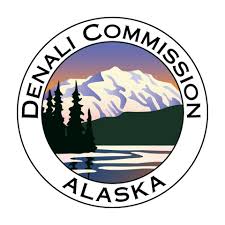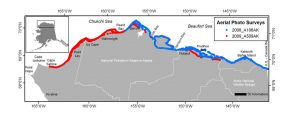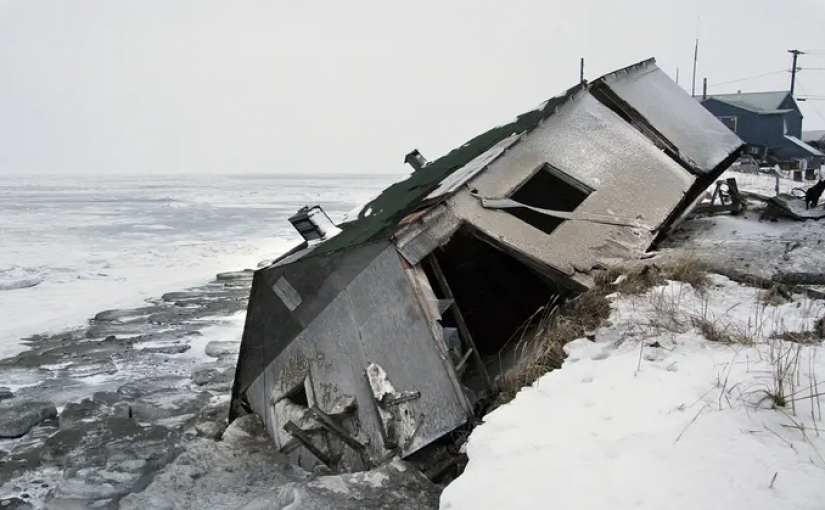What is coastal erosion?
Coastal erosion is the process where local sea level rise, strong waves, and coastal flooding wear down or carry away rocks, soils, and sands along a coast. It is a naturally occurring process that takes place wherever land and water interact. Overtime this process will change how the coastline looks.
How does climate change impact coastal erosion?
While coastal erosion is a naturally occurring process, it is heightened by climate change. There are three ways that global warming specifically increases coastal erosion:
- Melting sea ice: as sea ice melts, there is more time for waves to generate at sea, the bigger waves are able to more effectively erode the coastline.
- Sea-level rise: an increase in sea-level creates more exposure to storms which creates more land degradation – an increase in sea-level rise is partly due to the melting of glaciers.
- Thawing permafrost: as global temperatures increase the permafrost thaws which weakens coastal lands. Weakened coastal lands makes it easier for coastal erosion to occur and can increase the rate of erosion.
All three ways impact the arctic climate. One community that is effected by both melting sea ice and the thawing permafrost is the arctic foxes.
While the melting sea ice, sea-level rise and thawing permafrost are impacting the Arctic region; the Arctic oceans are also experiencing ocean acidification causing more damage to the fragile ecosystem.
Affected Communities:
31 communities have been identified as imminently threatened by coastal erosion including: Newtok, Kivalina, Shaktoolik, and Shishmaref.
Looking at the community of Newtok specifically, complete relocation is required as the coastline erosion of 83 feet a year has made their current location inhabitable. Not only are they losing their coastline but the water around them has become shallower and nearly impossible to navigate which would eventually isolate the community completely. The move started in 2019 and will not be finished until 2023 and has cost more than $25 million to relocate and build a new community in Mertarvik.
Current Policies and Research:
Denali Commission – Village Infrastructure Protection
Independent federal agency designed to provide critical utilities, infrastructure, and economic support throughout Alaska. The Commission created a program, Village Infrastructure Protection, in order to designate more time and resources that are required by vulnerable communities. Alaskan communities need unique facilities due to the location, environment and relative isolation i.e. they need airports, clinics, power plants, bulk-fuel tank farms, and water supply/waste disposal systems.

The Denali Commission is unable to independently fund everything required for each community so they work with other agencies and organizations to help threatened communities relocate to areas that won’t be as threatened by erosion
The United States Geological Survey (USGS)
Conducted research in order to understand how fast coastal erosion was occurring and what was causing the most coastal erosion.
Found that along the northern coast of Alaska an average of 1.4 meters of shoreline is lost a year with up to 20 meters of shoreline lost in some areas.

The question of what was causing the most coastal erosion could not be answered as more long term research is necessary.
Policy Recommendations:
- Raise Awareness
- When discussing environmental issues, coastal erosion is often overlooked and forgotten even though it is happening! In order to combat this more media coverage needs to be done. By making the problem more central, makes more people more aware and informed which has the potential to lead to action. Nothing can be done if no one knows about the issue.
- Create an agency through the Arctic Council to support threatened communities
- The Denali Commission’s Village Infrastructure Protection project is admirable but it is not enough to support these communities. The Arctic Council needs to get involved in order to ensure that no communities are overlooked and all communities get the support that is required in order to survive the changing climate. With the support of an international organization, communities outside of Alaska can be supported.
For more in depth information on how Coastal Erosion is impacting Alaskan communities, watch the video below!
[ensemblevideo version=”5.6.0″ content_type=”video” id=”5a3a363a-e6cd-4bb2-9ad9-ea1a094f22d9″ width=”640″ height=”360″ displaytitle=”true” autoplay=”false” showcaptions=”false” hidecontrols=”true” displaysharing=”false” displaycaptionsearch=”true” displayattachments=”true” audiopreviewimage=”true” isaudio=”false” displaylinks=”true” displaymetadata=”false” displaydateproduced=”true” displayembedcode=”false” displaydownloadicon=”false” displayviewersreport=”false” embedasthumbnail=”false” displayaxdxs=”false” embedtype=”responsive” forceembedtype=”false” name=”Coastal Erosion Presentation”]
